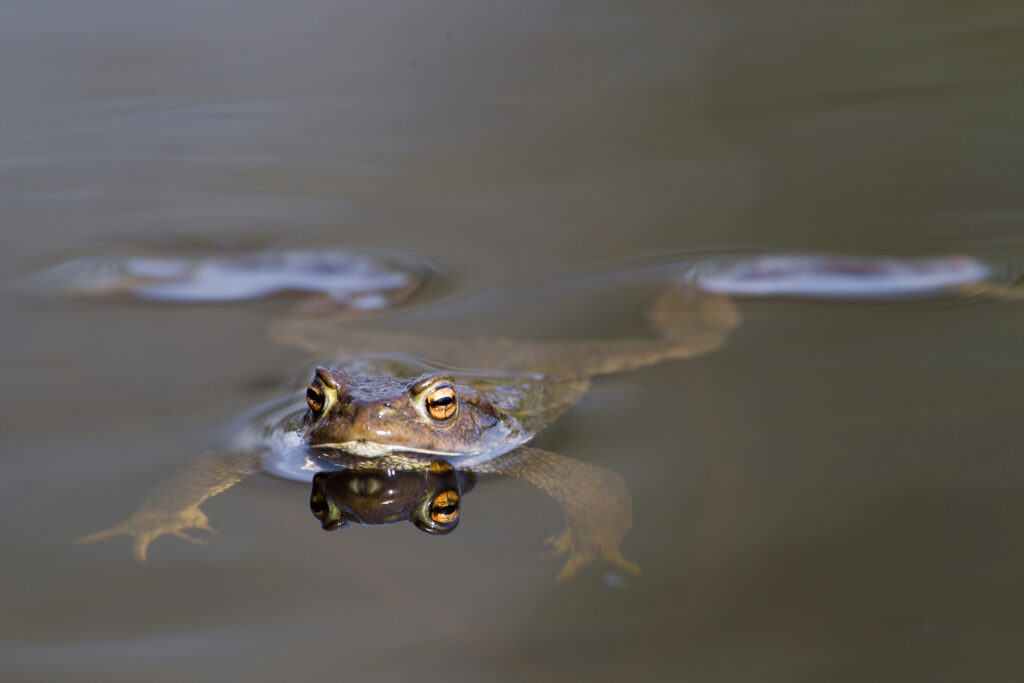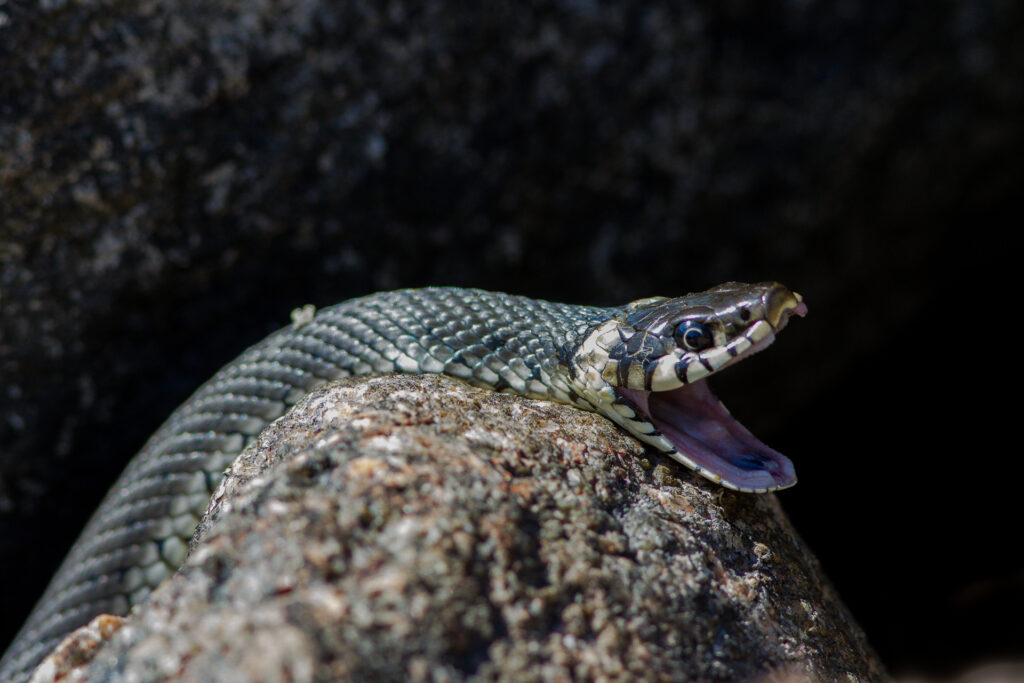Ice insulates and keeps small water bodies unfrozen throughout winter
The first freezing nights cover the surfaces of Ruissalo’s ponds with frost, making the water appear black and unmoving, framed in white. As the cold continues, this delicate sleet creeps from the sides of ponds further to their centres, eventually covering the entire surface in ice. The water just below the ice and snow is dark and literally ice cold. However, ice and snow also act as insulation, thanks to which the overall water temperature remains slightly above zero even in extremely cold weather.
Despite the extreme conditions, there is some silent life in ponds even in winter. At the bottom are hibernating frogs and smooth newts, which may even move around a little from time to time, as well as invertebrates living in a semi-dormant or entirely dormant state. Many invertebrates also winter in the form of eggs. In the event of a long cold spell, a shallow pond may end up freezing all the way down to the bottom, spelling disaster for hibernating animals.




